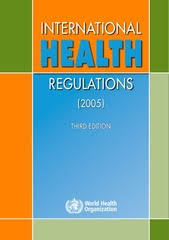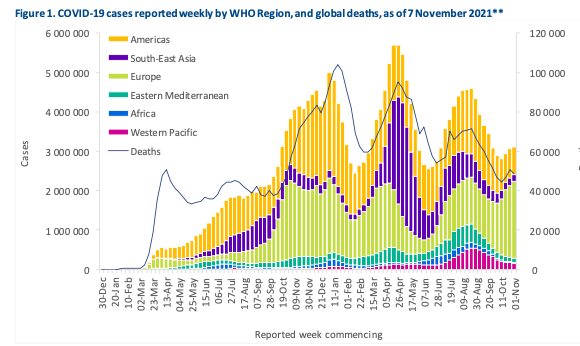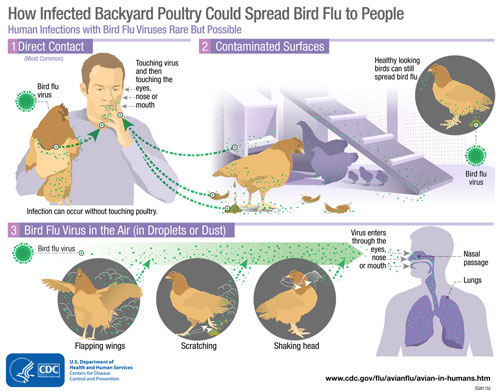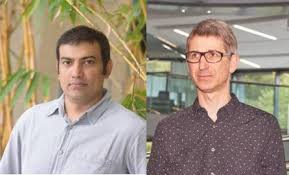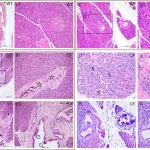Wild poliovirus
The committee noted that the rising incidence of global WPV1 cases seen since 2019 may have peaked with 140 cases with onset of illness in 2020 as at 21 January 2021 compared to the 137 cases that had occurred in 2019 as reported at 21 January 2020. While in Pakistan the number fell from 111 cases to 84, it is not clear that this is going to be sustained, while the number in Afghanistan had more than doubled from 26 to 56. Transmission persists in the core reservoirs of Karachi and Quetta Block in Pakistan and in Southern Afghanistan and has expanded to previously polio-free areas such as North Sindh and South Punjab in Pakistan and the Western and Northern regions in Afghanistan. The increase in Afghanistan is likely due to the growing cohort of missed children throughout the country due to local vaccination bans and the effect of COVID-19. The number of positive environmental samples has increased from 463 in 2019 to 503 so far in 2020.
The Committee noted that based on results from sequencing of WPV1 since the last committee meeting in October 2020, there were further instances of international spread of viruses from Pakistan to Afghanistan. The ongoing frequency of WPV1 international spread between the two countries and the increased vulnerability in other countries where routine immunization and polio prevention activities have both been adversely affected by the COVID-19 pandemic are two major factors that suggest the risk of international spread may be at the highest level since 2014. While border closures and lockdowns may mitigate the risk in the short term while in force, this would be outweighed in the longer term by falling population immunity through disruption of vaccination and the resumption of normal population movements.
Circulating vaccine derived poliovirus (cVDPV)
The committee was very concerned that cVDPV2 continues to spread rapidly. The number of cases in 2020 is 1009 (year to date), 254% higher than the total for 2019. As in all the years following 2016 when OPV2 was withdrawn, the number of cVDPV2 cases globally has been greater than the number of WPV1 cases. The Global Polio Laboratory Network routinely analyzes and tracks vaccine derived polioviruses just as it does wild polioviruses, to assist the polio program identify the patterns of spread and thereby provide opportunities to limit or prevent the circulation. In the most recent quarterly routine analysis (July to September 2020) there has been evidence of exportation of cVDPV2 from:
- Pakistan to Afghanistan
- Sudan to Egypt
- Afghanistan to Iran
- Côte D’Ivoire to Mali
- Benin to Nigeria
- Afghanistan to Pakistan
- Chad to Sudan
- Chad into Cameroon
- Côte D’Ivoire and Togo to Burkina Faso
- Somalia to Ethiopia
- Burkina Faso to Mali
- Angola to Republic of Congo
- Chad and Sudan to Republic of South Sudan
- Ethiopia to Somalia
More recently, in addition to the exportation of cVDPV2 to Egypt and the Republic of the Congo mentioned above, in West Africa, cVDPV2 that has been circulating in Côte d’Ivoire has now been found in sewage in Liberia, and similarly cVDPV2 previously found in Guinea has now caused an outbreak with at least three cases so far in Sierra Leone. Following the earlier event in September 2020 where virus circulating in Darfur in Sudan was detected in sewage in Giza, Cairo, a second exportation has been detected in sewage in Alexandria in Egypt with links to the cVDPV2 found in the River Nile state in Sudan, and one detection in each of Anwan and Qena in southern Egypt linked to Alexandria. The cVDPV2 virus causing the large outbreak in Afghanistan has now been detected in Sistan and Baluchistan province of the Islamic Republic of Iran, where it has been found in sewage in two districts on three separate occasions. It has also been detected in two AFP cases in Tajikistan.
However, the number of lineages detected so far in 2020 is 35, compared to 44 for the whole of 2019, and the number of newly emerged viruses is only 13 so far in 2020, compared to 38 during 2019. This reduction may reflect refinement and modification of cVDPV2 outbreak management to lessen the risk of seeding new emergences.
The committee noted that novel OPV2 (nOPV2) has received an interim recommendation for use under WHO’s Emergency Use Listing procedure (EUL) to enable rapid field availability, and potential wider rollout of the vaccine. The EUL involves careful and rigorous analysis of existing data to enable early, targeted use of unlicensed products for a Public Health Emergency of International Concern. WHO’s Strategic Advisory Group of Experts on Immunization (SAGE) endorsed accelerated clinical development of novel OPV2 and its assessment in October 2019.
COVID-19
The committee was concerned that COVID-19 continues to have an impact on polio eradication at many levels. Many of the polio affected countries are currently experiencing a second wave of COVID-19, notably Malaysia, Pakistan and Nigeria. Although resumption of SIAs is now a major focus of the polio program the effect of the pause in 2020 and the current second wave will hamper this resumption. There are ongoing signs of the impact of COVID-19 on surveillance, particularly with slow shipment and handling and reporting of samples for polio testing. All these factors serve to heighten the risk of polio transmission.
The committee noted that since the beginning of the pandemic, the value of polio-funded staff and assets contributed to the COVID-19 response in more than 50 countries is estimated at USD $104 million. In view of the overwhelming public health imperative to end the COVID-19 pandemic, the POB has committed to the polio program’s continued support for the next phase of COVID-19 response, COVID-19 vaccine introduction and delivery, through existing assets, infrastructure and expertise in key geographies.
Conclusion
The Committee unanimously agreed that the risk of international spread of poliovirus remains a Public Health Emergency of International Concern (PHEIC) and recommended the extension of Temporary Recommendations for a further three months. The Committee recognizes the concerns regarding the lengthy duration of the polio PHEIC, but concludes that the current situation is extraordinary, with clear ongoing and increasing risk of international spread and ongoing need for coordinated international response. The Committee considered the following factors in reaching this conclusion:
Rising risk of WPV1 international spread:
Based on the following factors, the risk of international spread of WPV1 appears to be currently very high:
- transmission in Pakistan and Afghanistan remains high noting that the small decrease in Pakistan is yet to be sustained, and in Afghanistan case numbers have doubled;
- expansion of WPV1 transmission into previously polio free areas in both countries and rising positive environmental samples in both endemic countries;
- the ongoing inaccessibility in many provinces of Afghanistan leading increasingly to highly susceptible populations which are and will continue to drive higher transmission; over 3 million children were missed in the October and November NIDs, and the cohort of missed children continues to grow quickly;
- ongoing vaccine hesitancy in Pakistan leading to higher numbers of missed children particularly in high risk districts;
- the fall in population immunity consequent on the four months pause in polio vaccination necessitated by the COVID-19 pandemic, leading to greater susceptibility to poliovirus importation and outbreaks in high risk countries;
- the complicated context of WPV eradication activities in Afghanistan and Pakistan created by the need to simultaneously respond to cVDPV2 and COVID-19;
- the second wave of COVID-19 that appears to be currently under way in many polio affected countries making interventions more difficult;
- the difficulties in supplying vaccines due to the pandemic (as is being seen in Yemen, for example).
Rising risk of cVDPV2 international spread:
Based on the following factors, the risk of international spread of cVDPV2 appears to be currently very high:
- The increasingly large number of cases, environmental detections and documented exportations across borders to both new countries and already infected countries;
- The ever widening gap in population intestinal mucosal immunity in young children since the withdrawal of OPV2 in 2016;
- The same factors regarding the COVID-19 pandemic as mentioned above;
- The population of inaccessible children in Afghanistan that appears to be driving intense transmission there.
Other factors include
- Weak routine immunization: Many countries have weak immunization systems that can be further impacted by various humanitarian emergencies including COVID19, and the number of countries in which immunization systems have been weakened or disrupted by conflict and complex emergencies poses a growing risk, leaving populations in these fragile states vulnerable to outbreaks of polio.
- Lack of access: Inaccessibility continues to be a major risk, particularly in several countries currently infected with WPV or cVDPV, i.e. Afghanistan, Nigeria, Niger, Somalia and Myanmar, which all have sizable populations that have been unreached with polio vaccine for prolonged periods.
- Population movement: While border closures may have mitigated the short term risk, conversely the risk once borders begin to be re-opened is likely to be higher.
Risk categories
The Committee provided the Director-General with the following advice aimed at reducing the risk of international spread of WPV1 and cVDPVs, based on the risk stratification as follows:
- States infected with WPV1, cVDPV1 or cVDPV3.
- States infected with cVDPV2, with or without evidence of local transmission:
- States no longer infected by WPV1 or cVDPV, but which remain vulnerable to re-infection by WPV or cVDPV.
Criteria to assess States as no longer infected by WPV1 or cVDPV:
- Poliovirus Case: 12 months after the onset date of the most recent case PLUS one month to account for case detection, investigation, laboratory testing and reporting period OR when all reported AFP cases with onset within 12 months of last case have been tested for polio and excluded for WPV1 or cVDPV, and environmental or other samples collected within 12 months of the last case have also tested negative, whichever is the longer.
- Environmental or other isolation of WPV1 or cVDPV (no poliovirus case): 12 months after collection of the most recent positive environmental or other sample (such as from a healthy child) PLUS one month to account for the laboratory testing and reporting period
These criteria may be varied for the endemic countries, where more rigorous assessment is needed in reference to surveillance gaps.
Once a country meets these criteria as no longer infected, the country will be considered vulnerable for a further 12 months. After this period, the country will no longer be subject to Temporary Recommendations, unless the Committee has concerns based on the final report.
TEMPORARY RECOMMENDATIONS
States infected with WPV1, cVDPV1 or cVDPV3 with potential risk of international spread
WPV1
Afghanistan (most recent detection 1 Jan 2021)
Pakistan (most recent detection 13 Jan 2021)
cVDPV1
Malaysia (most recent detection 13 March 2020)
Philippines (most recent detection 28 November 2019)
Yemen (most recent detection 6 Aug 2020)
These countries should:
- Officially declare, if not already done, at the level of head of state or government, that the interruption of poliovirus transmission is a national public health emergency and implement all required measures to support polio eradication; where such declaration has already been made, this emergency status should be maintained as long as the response is required.
- Ensure that all residents and longterm visitors (i.e. > four weeks) of all ages, receive a dose of bivalent oral poliovirus vaccine (bOPV) or inactivated poliovirus vaccine (IPV) between four weeks and 12 months prior to international travel.
- Ensure that those undertaking urgent travel (i.e. within four weeks), who have not received a dose of bOPV or IPV in the previous four weeks to 12 months, receive a dose of polio vaccine at least by the time of departure as this will still provide benefit, particularly for frequent travelers.
- Ensure that such travelers are provided with an International Certificate of Vaccination or Prophylaxis in the form specified in Annex 6 of the IHR to record their polio vaccination and serve as proof of vaccination.
- Restrict at the point of departure the international travel of any resident lacking documentation of appropriate polio vaccination. These recommendations apply to international travelers from all points of departure, irrespective of the means of conveyance (e.g. road, air, sea).
- Further intensify crossborder efforts by significantly improving coordination at the national, regional and local levels to substantially increase vaccination coverage of travelers crossing the border and of high risk crossborder populations. Improved coordination of crossborder efforts should include closer supervision and monitoring of the quality of vaccination at border transit points, as well as tracking of the proportion of travelers that are identified as unvaccinated after they have crossed the border.
- Further intensify efforts to increase routine immunization coverage, including sharing coverage data, as high routine immunization coverage is an essential element of the polio eradication strategy, particularly as the world moves closer to eradication.
- Maintain these measures until the following criteria have been met: (i) at least six months have passed without new infections and (ii) there is documentation of full application of high quality eradication activities in all infected and high risk areas; in the absence of such documentation these measures should be maintained until the state meets the above assessment criteria for being no longer infected.
- Provide to the Director-General a regular report on the implementation of the Temporary Recommendations on international travel.
States infected with cVDPV2, with or without evidence of local transmission:
Afghanistan (most recent detection 1 Jan 2020)
Angola (most recent detection 9 February 2020)
Benin (most recent detection 30 Nov 2020)
Burkina Faso (most recent detection 14 Nov 2020)
Cameroon (most recent detection 29 Septr 2020)
CAR (most recent detection 2 Oct 2020)
Chad (most recent detection25 Nov 2020)
Rep Congo (most recent detection 8 Sept 2020)
DR Congo (most recent detection 28 Oct 2020)
Côte d’Ivoire (most recent detection 9 Oct 2020)
Egypt (most recent detection 23 January 2021)
Ethiopia (most recent detection 30 Aug 2020)
Ghana (most recent detection 9 March 2020)
Guinea (most recent detection 26 Oct 2020)
Iran (most recent detection 25 December 2020)
(Islamic Republic of)
Liberia (most recent detection 3 Nov 2020)
Malaysia (most recent detection 13 March 2020)
Mali (most recent detection 31 Oct June 2020)
Niger (most recent detection 25 August 2020)
Nigeria (most recent detection 13 Nov 2020)
Pakistan (most recent detection 28 Dec 2020)
Philippines (most recent detection 16 January 2020)
Sierra Leone (most recent detection 19 Nov 2020
Somalia (most recent detection 25Oct 2020)
South Sudan (most recent detection 6 Nov 2020)
Sudan (most recent detection 3 Dec 2020)
Tajikistan (most recent detection 15 Jan 2021)
Togo (most recent detection 3 May 2020)
States that have had an importation of cVDPV2 but without evidence of local transmission should:
- Officially declare, if not already done, at the level of head of state or government, that the prevention or interruption of poliovirus transmission is a national public health emergency
- Undertake urgent and intensive investigations to determine if there has been local transmission of the imported cVDPV2
- Noting the existence of a separate mechanism for responding to type 2 poliovirus infections, consider requesting vaccines from the global mOPV2 stockpile based on the recommendations of the Advisory Group on mOPV2.
- Further intensify efforts to increase IPV immunization coverage, including sharing coverage data.
- Intensify national and international surveillance regional cooperation and crossborder coordination to enhance surveillance for prompt detection of poliovirus.
States with local transmission of cVDPV2, with risk of international spread should in addition to the above measures should:
- Encourage residents and longterm visitors to receive a dose of IPV four weeks to 12 months prior to international travel.
- Ensure that travelers who receive such vaccination have access to an appropriate document to record their polio vaccination status.
- Intensify regional cooperation and crossborder coordination to enhance surveillance for prompt detection of poliovirus, and vaccinate refugees, travelers and crossborder populations, according to the advice of the Advisory Group.
For both sub-categories:
- Maintain these measures until the following criteria have been met: (i) at least six months have passed without the detection of circulation of VDPV2 in the country from any source, and (ii) there is documentation of full application of high quality eradication activities in all infected and high risk areas; in the absence of such documentation these measures should be maintained until the state meets the criteria of a ‘state no longer infected’.
- At the end of 12 months without evidence of transmission, provide a report to the Director-General on measures taken to implement the Temporary Recommendations.
States no longer infected by WPV1 or cVDPV, but which remain vulnerable to re-infection by WPV or cVDPV
WPV1
none
cVDPV
Mozambique (most recent cVDPV2 detection 17 December 2018)
Indonesia (most recent cVDPV1 detection 13 February 2019)
Myanmar (most recent cVDPV1 detection 9 August 2019)
China (most recent cVDPV2 detection 18 August 2019)
Zambia (most recent cVDPV2 detection 25 November 2019)
These countries should:
- Urgently strengthen routine immunization to boost population immunity.
- Enhance surveillance quality, including considering introducing supplementary methods such as environmental surveillance, to reduce the risk of undetected WPV1 and cVDPV transmission, particularly among high risk mobile and vulnerable populations.
- Intensify efforts to ensure vaccination of mobile and crossborder populations, Internally Displaced Persons, refugees and other vulnerable groups.
- Enhance regional cooperation and cross border coordination to ensure prompt detection of WPV1 and cVDPV, and vaccination of high risk population groups.
- Maintain these measures with documentation of full application of high quality surveillance and vaccination activities.
- At the end of 12 months without evidence of reintroduction of WPV1 or new emergence and circulation of cVDPV, provide a report to the Director-General on measures taken to implement the Temporary Recommendations.
Additional considerations
The committee welcomed the Emergency Use Listing of novel OPV2 but cautioned there was much to be done before the new vacccine could be expected to have a significant impact globally on the spread of cVDPV2. The phased replacement during 2021 of Sabin OPV2 with novel OPV2 is expected to substantially reduce the source of cVDPV2 emergence, transmission and subsequent risk of international spread. Full licensure and pre-qualification of nOPV2 is not expected before 2022; therefore all countries at risk of cVDPV2 outbreak should consider preparing for novel OPV2 use under Emergency Use Listing procedure.
The committee welcomed the progress being made in individual countries that were facing huge challenges with both polio and COVID-19. COVID-19 is also likely to continue to have a significant adverse impact on stopping polio transmission throughout 2021, with diversion of resources, barriers to successful polio campaign implementation and the consequential growing immunity gap. However, the committee urged countries to look for where synergies can be built between polio and COVID -19 control, such as countering vaccine hesitancy, expanding and sharing testing resources, and vaccine management. Countries also needed to make sure that local lockdowns and border restrictions were implemented in such a way as to avoid hampering specimen shipment and testing, particularly in West Africa where there are already constraints in lab capacity. As testing for COVID-19 is strengthened, this should be done so as to strengthen lab capacity for other infectious diseases such as polio. The committee urges affected countries to strengthen cross border cooperation as this appeared to be inconsistently carried out.
The committee also noted the risk of vaccine hesitancy could be exacerbated during the pandemic, so that adverse events during the development or future deployment of any COVID-19 vaccine could compound the existing issues around polio vaccines, particularly but not only in Pakistan. Conversely, vaccine issues arising out of novel OPV2 or trivalent OPV use could adversely affect any future COVID-19 vaccine deployment. The committee urged countries with particular issues around vaccine hesitancy to make preparations now to avert situations of greater vaccine refusals through education campaigns, activities to counter misinformation and rumors and wherever possible provide incentives to target populations such as multi-antigen campaigns and offering other health and wellbeing services (vitamins, anti-worming medication, soap etc).
The committee was also very concerned about the polio program funding gap which is developing in 2021 and beyond, noting several countries in Africa had been adversely affected by funding constraints. The committee called on donors to maintain funding of polio eradication activities, as the potential for reversal of progress appears high, with many years of work undone easily and swiftly if WPV1 spreads outside the endemic countries.
Noting the serious situation in Afghanistan, the committee welcomed the recent agreement regarding mosque to mosque vaccination campaign activities but urged using multiple vaccines to avoid outbreaks of other vaccine preventable diseases such as measles.
Based on the current situation regarding WPV1 and cVDPV, and the reports provided by affected countries, the Director-General accepted the Committee’s assessment and on 19 February 2021 determined that the situation relating to poliovirus continues to constitute a PHEIC, with respect to WPV1 and cVDPV. The Director-General endorsed the Committee’s recommendations for countries meeting the definition for ‘States infected with WPV1, cVDPV1 or cVDPV3 with potential risk for international spread’, ‘States infected with cVDPV2 with potential risk for international spread’ and for ‘States no longer infected by WPV1 or cVDPV, but which remain vulnerable to re-infection by WPV or cVDPV’ and extended the Temporary Recommendations under the IHR to reduce the risk of the international spread of poliovirus, effective 19 February 2021.

